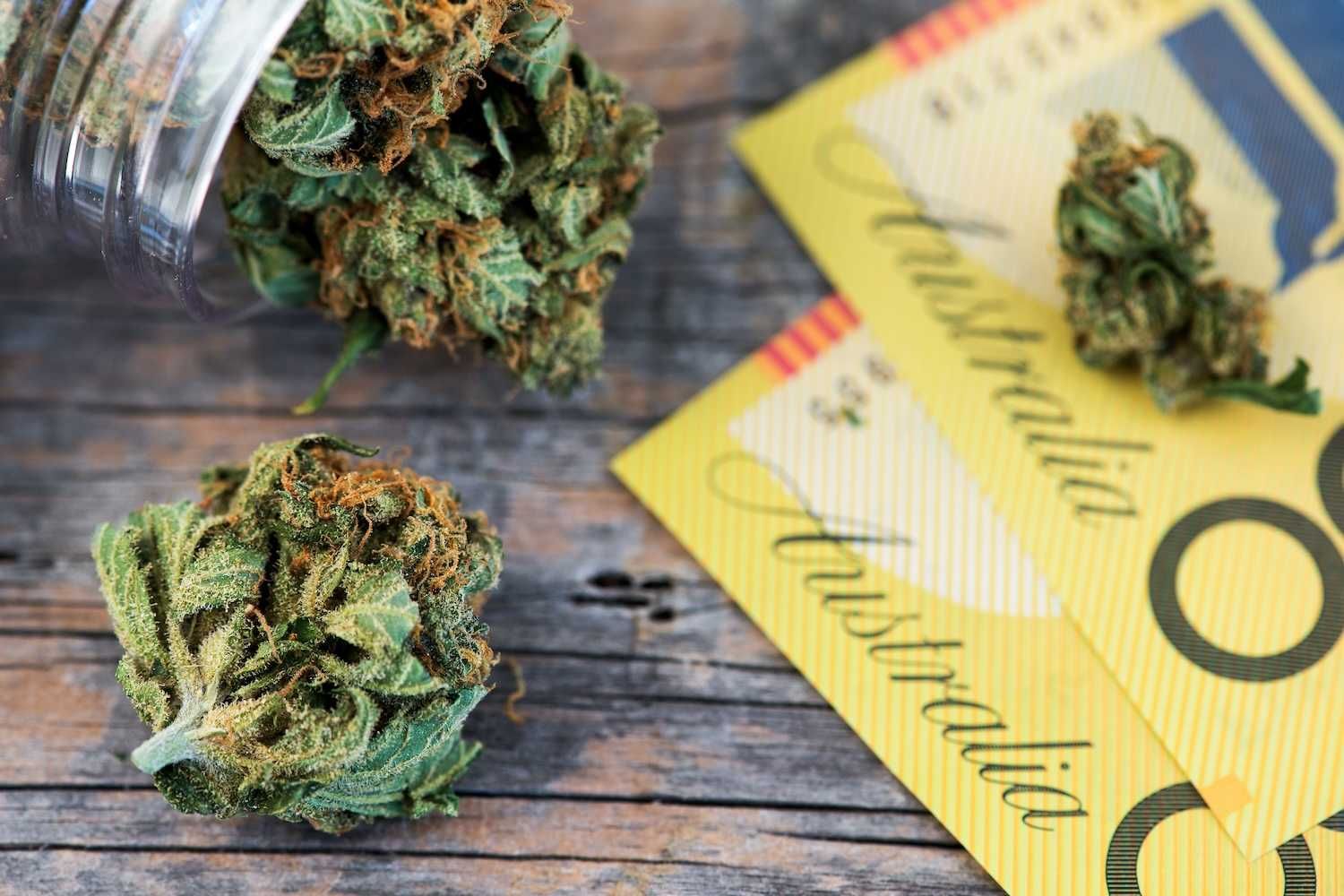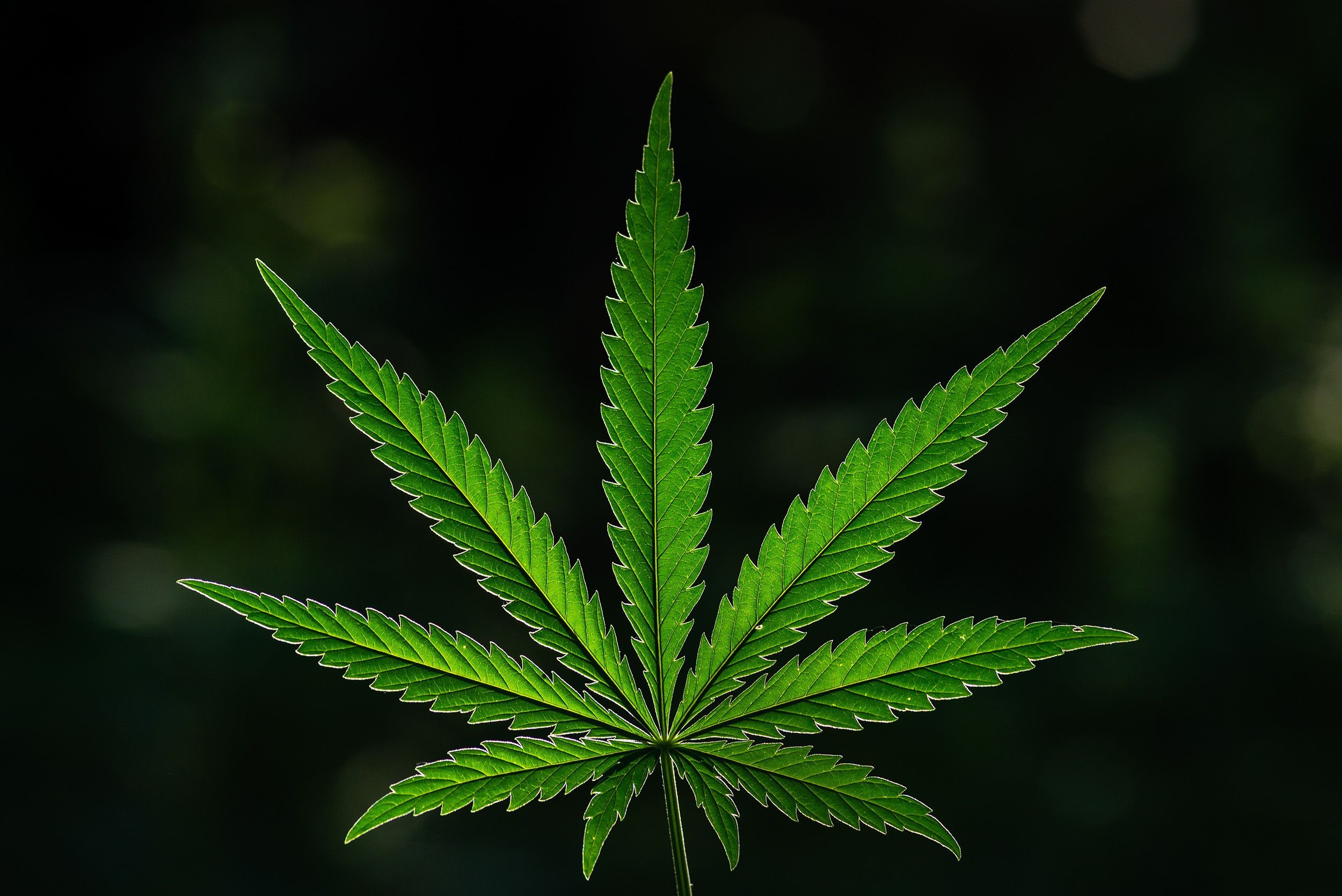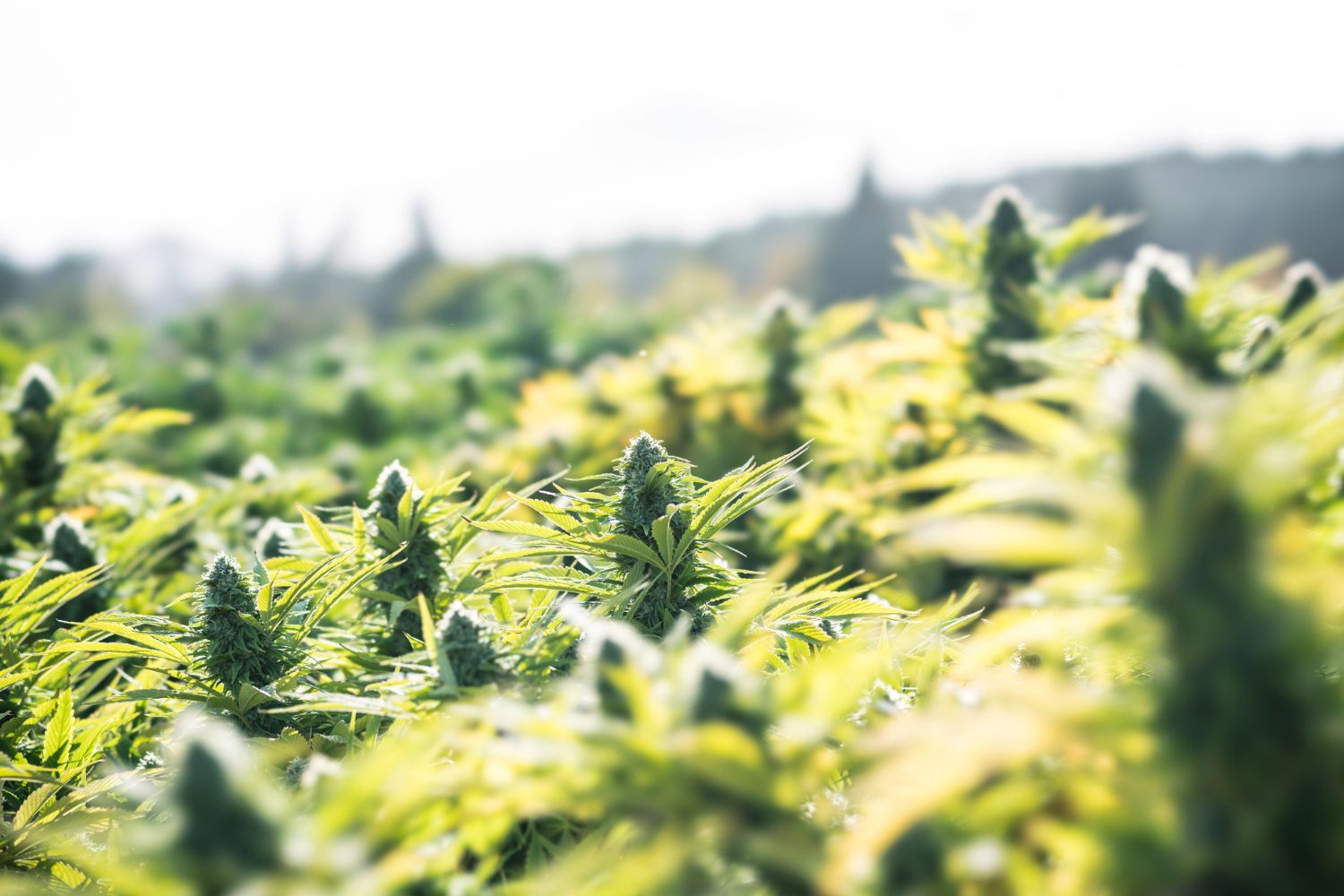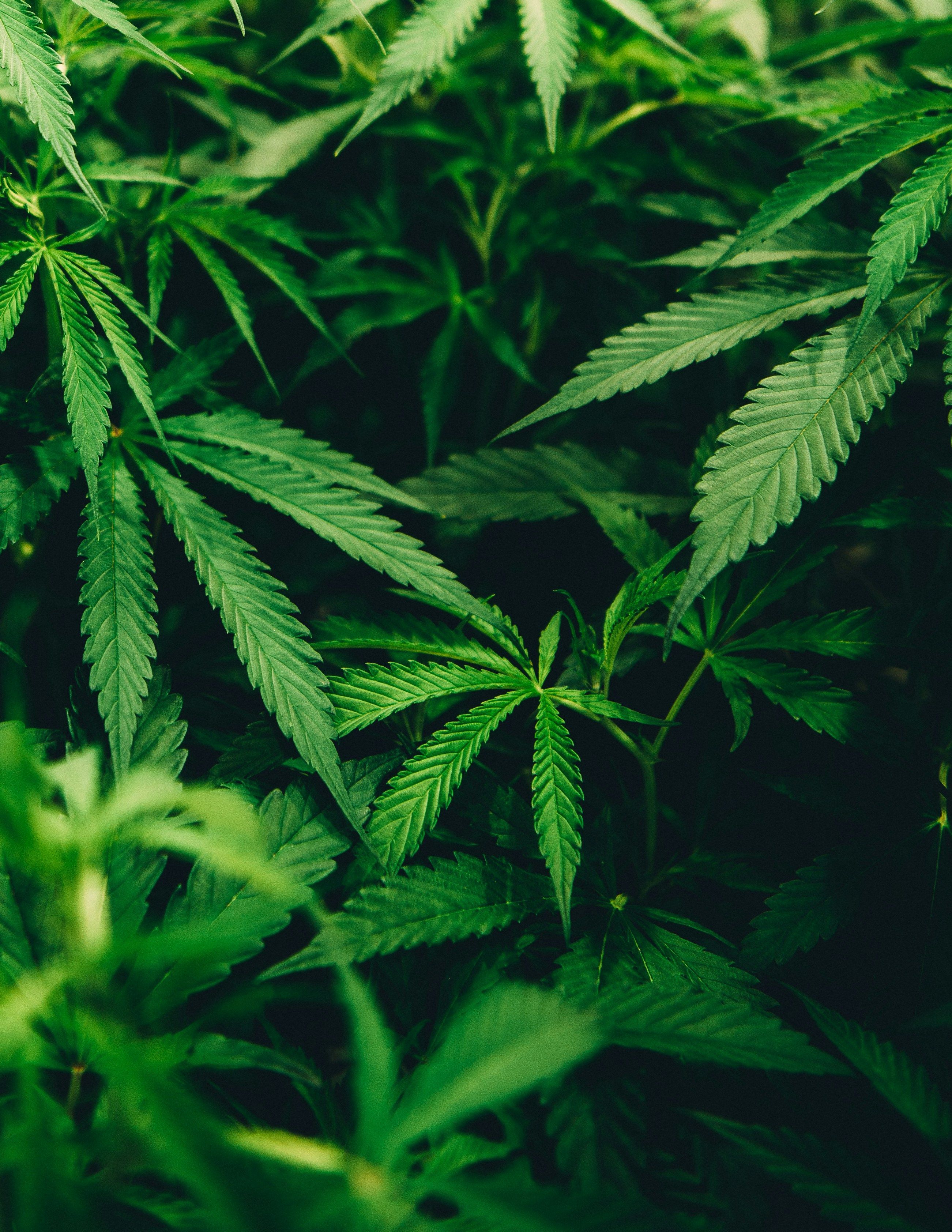- Total Cannabis Net Revenue of $70.3 Million , Excluding Provisions of $2.7 Million , Up 11% over Q2 2020
- Medical Cannabis Net Revenue of $38.9 Million , Up 42% Versus Q2 2020, Driven by a 562% Increase in High Margin International Medical Sales
- Adjusted EBITDA Loss, excluding Provisions and Termination Costs, of $12.1 Million Represents an Improvement of $53.1 Million Over Q2 2020; Current Loss Triggered by Several Decisions Expected to Boost Long-Term Profitability
- Improved Cash Use by More Than 74% Versus Q2 2020; Cash on Hand at February 10, 2021 of $565 Million
NYSE | TSX: ACB
Aurora Cannabis Inc. (the " Company " or " Aurora ") (NYSE: ACB) (TSX: ACB), the Canadian company defining the future of cannabinoids worldwide, today announced its financial and operational results for the second quarter of fiscal 2021 ended December 31, 2020 .
"Aurora had an excellent second quarter, and I'm pleased that we're advancing nicely against the plan we laid out in September of 2020," stated Miguel Martin , Chief Executive Officer of Aurora Cannabis. "For the period, our core revenue strength in medical and consumer was complemented by initial rollouts in vape products and concentrates. Combined, these elements are part of the proven, regulated CPG strategy we've adopted. Adjusted EBITDA for the quarter, while vastly improved year over year, was impacted by several decisions that we believe will clear a path for our premium product focus and more variable cost model. We are confident that this will give Aurora maximum flexibility and position the organization to drive significant cashflow in the coming quarters."
"To further support this strategy, we have also focused on improving our cash burn, margins and overall financial flexibility. To that point, our year over year cash use has decreased by 74% to $70.5 million , our normalized margins remain solid particularly in medical, and our recently amended credit facility gives Aurora much improved optionality as opportunities arise. Combined with $565 million in cash on our balance sheet today, Aurora will continue to be a long-term player in the global cannabinoid market and increasingly positioned to deliver for shareholders over the long run."
Second Quarter 2021 Highlights
(Unless otherwise stated, comparisons are made between fiscal Q2 2021 and Q2 2020 results and are in Canadian dollars)
Q2 2021 total and cannabis net revenue 1 before provisions was $70.3 million , an 11% increase over Q2 2020 and 2.5% sequentially. After accounting for return and price provisions, Q2 2021 total cannabis net revenue was $67.7 million , a 28% increase in cannabis net revenue 1 over fiscal Q2 of the prior year.
Adjusted gross margin before fair value adjustments on cannabis net revenue 1 was 42% in Q2 2021, versus 48% in Q2 2020. The decrease is due to the purposeful reduction in production levels at Aurora Sky resulting in an increase in cash cost of sales due to the under-utilization of capacity. Also impacting adjusted gross margin was a $1.8 million increase in actual net returns, price adjustments and provisions primarily relating to company-initiated product returns meant to open channels to newer, higher-potency flower that Aurora is now producing. Normalizing for these impacts, adjusted gross margin was 52%.
| _____________________ |
| 1 These terms are non-GAAP measures, see "Non-GAAP Measures" below. |
Adjusted EBITDA 1 loss was $16.8 million in Q2 2021, which includes termination and restructuring costs of $2.9 million . Excluding restructuring costs and product return provisions, the Company's Adjusted EBITDA loss is $12.1 million .
Consumer cannabis:
- Consumer cannabis net revenue 1 was $28.6 million ( $31.1 million excluding provisions), a 25% increase from the prior year. Additionally, Aurora's consumer cannabis derivative products net revenue increased by $1.7 million sequentially, driven by product launches in vapes, edibles and concentrates.
- Adjusted gross margin before fair value adjustments on consumer cannabis net revenue 1 was 27% in Q2 2021 versus 33% in the prior year period, primarily driven by a $3.3 million increase in cost of sales due to under-utilized capacity as a result of the scaling back production at Aurora Sky, which is expected to partially reverse in subsequent quarters and sales of our lower margin Daily Special value brand which was not present in the prior comparative period.
Medical cannabis:
- Medical cannabis net revenue 1 was $38.9 million ( $39 million excluding provisions), a 42% increase from the prior year period. The increase was primarily attributable to a continued strong performance in both the international and Canadian medical businesses. International medical sales grew by 562% over the prior year comparative period.
- Adjusted gross margin before fair value adjustments on medical cannabis net revenue 1 was 56% in Q2 2021 versus 59% in the prior year and prior quarter, primarily driven by the increase in cost of sales due to the under-utilized capacity as a result of the scaling back production at Aurora Sky.
Selling, General and Administrative ("SG&A") and Adjusted EBITDA:
- SG&A, including Research and Development ("R&D"), was $44.4 million in Q2 2021, down $49.7 million or 53% from the prior year period as a result of the Company's Business Transformation Plan. Included in SG&A and R&D in Q2 2021 is $2.1 million of costs related to restructuring charges, and severance and benefit costs associated with the Business Transformation Plan. Excluding these impacts, Q2 2021 SG&A and R&D was $42.3 million .
- Adjusted EBITDA 1 in Q2 2021 was a loss of $16.8 million ( $12.1 million loss excluding the increase in revenue provisions and restructuring costs), compared to the prior year Adjusted EBITDA loss of $69.9 million primarily driven by the substantial decrease in SG&A and R&D expenses.
Additional Financial Information:
- Cash balance as of February 10, 2021 was approximately $565 million .
- Aurora continues to increase its operational flexibility to improve its cashflow and better address consumer needs by reducing production and complexity. Of the four cultivation facilities set to close, three are now fully shuttered. Effective December 15, 2020 , the Company also shuttered operations at the Aurora Sun facility and reduced production at its Aurora Sky facility by 75%, where it is testing new processes and methodologies proven successful at other premium cultivation sites.
Fiscal Q2 2021 Cash Use: Significant Improvement in Cash Used in Operations
Total cash use in Q2 2021 showed significant improvement relative to both Q2 2020 and Q1 2021.
In Q2 2021, the Company used $22.7 million in cash to fund operations, excluding working capital investments. This use included $2.1 million in restructuring/termination payments. Cash used to pay for capital expenditures, net of disposals, in Q2 2021 was $8.8 million versus $15.0 million in the prior quarter, as many long-lead projects are now complete. Cash used in operations and for capital expenditures are crucial metrics in Aurora's drive toward generating sustainable positive free cash flow, and both have improved significantly and consistently over the past several quarters.
Increased net working capital used $30.4 million in the quarter, driven by a $23.9 million decrease in accounts payable and a $11.7 million increase in prepaids, offset by a $16.4 million decrease in accounts receivable. Within working capital, inventory and biological assets used $10.0 million , a marked improvement from the $25.1 million in Q1 2021 demonstrating the Company's progress to more closely align production levels with demand.
Given Aurora's continued strong gross margins, reduced level of SG&A expense and capital expenditures, and ongoing improvements in working capital investment, management expects the Company to continue its progress toward positive cash flow.
The main components of cash source and use in Q2 2021 were as follows:
| ($ thousands) | Q2 2021 | Q2 2020 (3) | Q1 2021 |
| Cash Flow | | | |
| Cash, Opening | $133,678 | $152,526 | $162,179 |
| | | | |
| Cash used in operations | ($22,709) | ($84,766) | ($72,580) |
| Working capital change | ($30,433) | ($54,238) | ($37,012) |
| Capital expenditures | ($8,837) | ($128,405) | ($14,980) |
| Debt and interest payments | ($8,559) | ($5,579) | ($18,212) |
| Cash use | ($70,538) | ($272,988) | ($142,784) |
| | | | |
| Proceeds raised from sale of marketable securities and investments in associates | $6,135 | - | - |
| Proceeds raised through debt | - | $14,394 | - |
| Proceeds raised through equity financing (1) | $365,111 | $262,402 | $114,283 |
| Cash raised | $371,246 | $276,796 | $114,283 |
| | | | |
| Cash, Ending (2) | $434,386 | $156,334 | $133,678 |
| (1) | Includes impact of FX on USD cash raised from financing |
| (2) | Ending cash balance above includes $50.0M restricted cash as required under the amended BMO Credit Facility. The $50.0M restricted cash can be used to repay, at any time at the Company's discretion the outstanding principal on its term loan on a 1:1 basis with a corresponding reduction in the restricted cash balance requirement. |
| (3) | Previous reported amounts have been restated to adjust for the change in accounting policy for inventory costing relating to by-products and the allocation of production management staff salaries. Refer to Note 2(e) of the unaudited Condensed Consolidated Interim Financial Statements for a reconciliation on the change in accounting policy. |
Refer to "Condensed Consolidated Interim Statement of Cash Flows" in the "Condensed Consolidated Interim Financial Statements (unaudited)" for our cash flow statements prepared in accordance with IAS 7 – Statement of Cash Flows.
Q2 2021 Key Financial and Operational Metrics
| ($ thousands, except Operational Results) | Q2 2021 | Q1 2021 | $ Change | % Change | Q2 2020 | $ Change | % Change | | |||||
| Financial Results | | | | | | | | | | ||||
| Total net revenue (1) | $67,673 | | $67,812 | | ($139) | | 0 | % | $55,138 | | $12,535 | 23 | % |
| Cannabis net revenue (1)(2)(3a) | $67,673 | | $67,812 | | ($139) | | 0 | % | $52,676 | | $14,997 | 28 | % |
| Medical cannabis net revenue (2)(3a) | $38,856 | | $33,474 | | $5,382 | | 16 | % | $27,386 | | $11,470 | 42 | % |
| Consumer cannabis net revenue (1)(2)(3a) | $28,573 | | $34,338 | | ($5,765) | | (17) | % | $22,906 | | $5,667 | 25 | % |
| Wholesale bulk cannabis net revenue (2)(3a) | $244 | | $- | | $244 | | N/A | | $2,384 | | ($2,140) | (90) | % |
| Adjusted gross margin before FV | 42 | % | 48 | % | N/A | (6) | % | 48 | % | N/A | (6) | % | |
| Adjusted gross margin before FV | 56 | % | 59 | % | N/A | (3) | % | 59 | % | N/A | (3) | % | |
| Adjusted gross margin before FV | 27 | % | 38 | % | N/A | (11) | % | 33 | % | N/A | (6) | % | |
| Adjusted gross margin before FV | (305) | % | N/A | | N/A | N/A | | 61 | % | N/A | (366) | % | |
| SG&A expense | $41,972 | | $44,324 | | ($2,352) | | (5) | % | $87,301 | | ($45,329) | (52) | % |
| R&D expense | $2,432 | | $2,584 | | ($152) | | (6) | % | $6,775 | | ($4,343) | (64) | % |
| Adjusted EBITDA (2) (3c) | ($16,802) | | ($57,891) | | $41,089 | | (71) | % | ($69,857) | | $53,055 | (76) | % |
| | | | | | | | | | | ||||
| Balance Sheet | | | | | | | | | | ||||
| Working capital (6) | $592,746 | | $201,425 | | $391,321 | | 194 | % | $400,070 | | $192,676 | 48 | % |
| Cannabis inventory and biological assets (2)(4) | $179,502 | | $166,178 | | $13,324 | | 8 | % | $200,868 | | ($21,366) | (11) | % |
| Total assets (6) | $2,830,190 | | $2,757,272 | | $72,918 | | 3 | % | $4,656,046 | | ($1,825,856) | (39) | % |
| | | | | | | | | | | ||||
| Operational Results – Cannabis | | | | | | | | | | ||||
| Average net selling price of dried cannabis (2) | $4.00 | | $3.72 | | $0.28 | | 8 | % | $4.69 | | ($0.69) | (15) | % |
| Kilograms sold (5) | 15,253 | | 16,139 | | (886) | | (5) | % | 9,501 | | 5,752 | 61 | % |
| (1) | Includes the impact of actual and expected product returns and price adjustments (three months ended December 31, 2020 - $2.7 million; three months ended September 30, 2020 - $0.8 million). | ||
| (2) | These terms are defined in the "Cautionary Statement Regarding Certain Non-GAAP Performance Measures" section of the MD&A. Excluding product return provisions and restructuring charges, Adjusted EBITDA is $12.1 million. | ||
| (3) | Refer to the following MD&A sections for reconciliation of non-GAAP measures to the IFRS equivalent measure: | ||
| | a. | Refer to the "Revenue" section for a reconciliation of cannabis net revenue to the IFRS equivalent. | |
| | b. | Refer to the "Cost of Sales and Gross Margin" section for reconciliation to the IFRS equivalent. | |
| | c. | Refer to the "Adjusted EBITDA" section for reconciliation to the IFRS equivalent. | |
| (4) | Represents total biological assets and cannabis inventory, exclusive of merchandise, accessories, supplies and consumables. | ||
| (5) | The kilograms sold is offset by the grams returned during the period. | ||
| (6) | In accordance with IFRS 3 - Business Combinations, acquisition date fair values assigned to the Reliva purchase price allocation and goodwill have been adjusted, within the applicable measurement period, where new information is obtained about facts and circumstances that existed at the acquisition date. Refer to Note 12 of the Financial Statements. | ||
Events Subsequent to Q2 2021 Quarter End
- On January 14, 2021 , Aurora entered into an agreement with Great North Distributors Inc., Canada's first national sales broker for legalized adult-use cannabis, to be the exclusive representative for Aurora's Canadian cannabis retail brands. Great North has reach across every province in Canada , including established relationships and expertise in working with provincially-owned and operated retailers and private retailers in Canada's cannabis industry. The agreement was designed to significantly bolster Aurora's market position in Canada .
- On January 26, 2021 , Aurora closed its bought deal public offering (the "Offering") of units of the Company for total gross proceeds of US$137.9 million . The Company sold 13,200,000 Units at a price of US$10.45 per Unit, including 1,200,000 Units sold pursuant to the exercise in full of the underwriters' over-allotment option. BMO Capital Markets and ATB Capital Markets acted as the bookrunners for the Offering. The Company believes that this opportunistic financing fits with its broader strategy to have a strong balance sheet while maintaining maximum flexibility to invest and build towards being a leader in global cannabinoids.
- Additionally, Allan Cleiren , Chief Operating Officer, has decided to retire from the Company effective March 31, 2021 . The Company would like to thank Allan for his years of dedicated service and wish him well in his future endeavours.
Conference Call
Aurora will host a conference call today, February 11, 2021, to discuss these results. Miguel Martin, Chief Executive Officer, and Glen Ibbott , Chief Financial Officer, will host the call starting at 5:00 p.m. Eastern time. A question and answer session will follow management's presentation.
| DATE: | | Thursday, February 11, 2021 |
| TIME: | | 5:00 p.m. Eastern Time | 3:00 p.m. Mountain Time |
| WEBCAST: | |
About Aurora
Aurora is a global leader in the cannabis industry serving both the medical and consumer markets. Headquartered in Edmonton, Alberta , Aurora is a pioneer in global cannabis dedicated to helping people improve their lives. The Company's brand portfolio includes Aurora, Aurora Drift, San Rafael '71, Daily Special, AltaVie, MedReleaf, CanniMed, Whistler, and Reliva CBD. Providing customers with innovative, high-quality cannabis products, Aurora's brands continue to break through as industry leaders in the medical, performance, wellness and recreational markets wherever they are launched. For more information, please visit our website at www.auroramj.com .
Aurora's common shares trade on the TSX and NYSE under the symbol "ACB", and is a constituent of the S&P/TSX Composite Index.
Forward Looking Statements
This news release includes certain statements which may constitute "forward-looking information" and "forward-looking statements" within the meaning of Canadian securities law requirements (collectively, "forward-looking statements" or "FLS"). These forward-looking statements are made as of the date of this press release and the Company does not intend, and does not assume any obligation, to update these FLS, except as required under applicable securities legislation. FLS relate to future events or future performance and reflect Company management's expectations or beliefs regarding future events. In certain cases, FLS can be identified by the use of words such as "plans", "expects" or "does not expect", "is expected", "budget", "scheduled", "estimates", "forecasts", "intends", "anticipates" or "does not anticipate", or "believes", or variations of such words and phrases or statements that certain actions, events or results "may", "could", "would", "might" or "will be taken", "occur" or "be achieved" or the negative of these terms or comparable terminology. In this document, certain forward-looking statements are identified by words including "may", "future", "expected", "intends" and "estimates". By their very nature FLS involve known and unknown risks, uncertainties and other factors which may cause the actual results, performance or achievements of the Company to be materially different from any future results, performance or achievements expressed or implied by the FLS. The Company provides no assurance that FLS will prove to be accurate, as actual results and future events could differ materially from those anticipated in such statements. Accordingly, readers should not place undue reliance on FLS. Certain FLS in this press release include, but are not limited to the following:
- the impact of the Company's premium product focus and variable cost model
- delivery of shareholder value
- strategic relationships, and capital expenditures, and related benefits;
- future strategic plans;
- growth in the global consumer use cannabis market;
- expectations regarding production capacity, costs and yields; and
- expectations regarding progress towards positive cash flow
The above and other aspects of the Company's anticipated future operations are forward-looking in nature and, as a result, are subject to certain risks and uncertainties. Although the Company believes that the expectations reflected in these FLS are reasonable, undue reliance should not be placed on them as actual results may differ materially from the forward-looking statements. Such FLS are estimates reflecting the Company's best judgment based upon current information and involve a number of risks and uncertainties, and there can be no assurance that other factors will not affect the accuracy of such forward-looking statements. These risks include, but are not limited to, the ability to retain key personnel, the ability to continue investing in infrastructure to support growth, the ability to obtain financing on acceptable terms, the continued quality of our products, customer experience and retention, the development of third party government and non-government consumer sales channels, management's estimates of consumer demand in Canada and in jurisdictions where the Company exports, expectations of future results and expenses, the availability of additional capital to complete construction projects and facilities improvements, the risk of successful integration of acquired business and operations, management's estimation that SG&A will grow only in proportion of revenue growth, the ability to expand and maintain distribution capabilities, the impact of competition, the general impact of financial market conditions, the yield from cannabis growing operations, product demand, changes in prices of required commodities, competition, and the possibility for changes in laws, rules, and regulations in the industry, epidemics, pandemics or other public health crises, including the current outbreak of COVID-19. Readers are urged to consider the risks, uncertainties and assumptions carefully in evaluating the forward-looking statements and are cautioned not to place undue reliance on such information.
Should one or more of these risks or uncertainties materialize, or should underlying factors or assumptions prove incorrect, actual results may vary materially from those described in forward looking statements. Material factors or assumptions involved in developing forward-looking statements include, without limitation, publicly available information from governmental sources as well as from market research and industry analysis and on assumptions based on data and knowledge of this industry which the Company believes to be reasonable.
Although the Company believes that the expectations conveyed by the forward-looking statements are reasonable based on the information available to the Company on the date hereof, no assurance can be given as to future results, approvals or achievements. Forward-looking statements contained in this press release are expressly qualified by this cautionary statement. The Company disclaims any duty to update any of the forward-looking statements after the date of this Annual Information form except as otherwise required by applicable law.
Non-GAAP Measures
The Company uses certain financial performance measures that are not recognized or defined under IFRS (termed "Non-GAAP Measures"). As a result, this data may not be comparable to data presented by other licensed producers of cannabis and cannabis companies. For an explanation of these measures to related comparable financial information presented in the consolidated financial statements prepared in accordance with IFRS, refer to the discussion below. The Company believes that these Non-GAAP Measures are useful indicators of operating performance and are specifically used by management to assess the financial and operational performance of the Company. These Non-GAAP Measures include, but are not limited, to the following:
- Cannabis net revenue represents revenue from the sale of cannabis products, excluding excise taxes. Cannabis net revenue is further broken down as follows:
- Medical cannabis net revenue represents Canadian and international cannabis net revenue for medical cannabis sales only, excluding wholesale bulk cannabis net revenue.
- Consumer cannabis net revenue represents cannabis net revenue for consumer cannabis sales only.
- Wholesale bulk cannabis net revenue represents cannabis net revenue for wholesale bulk sales only.
- Management believes the cannabis net revenue measures provide more specific information about the net revenue purely generated from our core cannabis business and by market type.
- Average net selling price per gram and gram equivalent is calculated by taking cannabis net revenue divided by total grams and grams equivalent of cannabis sold in the period. Average net selling price per gram and gram equivalent is further broken down as follows:
- Average net selling price per gram of dried cannabis represents the average net selling price per gram for dried cannabis sales only, excluding wholesale bulk cannabis sold in the period.
- Average net selling price per gram and gram equivalent of consumer cannabis represents the average net selling price per gram and gram equivalent for dried cannabis and cannabis extracts sold in the consumer market
Management believes the average net selling price per gram or gram equivalent measures provide more specific information about the pricing trends over time by product and market type. - Adjusted gross profit before FV adjustments on cannabis net revenue represents cash gross profit and gross margin on cannabis net revenue and is calculated by subtracting from total cannabis net revenue (i) cost of sales, before the effects of changes in FV of biological assets and inventory; (ii) cost of sales from non-cannabis auxiliary support functions; and removing (iii) depreciation in cost of sales; and (iv) cannabis inventory impairment. Adjusted gross margin before FV adjustments on cannabis net revenue is calculated by dividing adjusted gross profit before FV adjustments on cannabis net revenue divided by cannabis net revenue. Adjusted gross profit and gross margin before FV adjustments on cannabis net revenue is further broken down as follows:
- Adjusted gross profit and gross margin before FV adjustments on medical cannabis net revenue represents adjusted gross profit and gross margin before FV adjustments on sales generated in the medical market only.
- Adjusted gross profit and gross margin before FV adjustments on consumer cannabis net revenue represents adjusted gross profit and gross margin before FV adjustments on sales generated in the consumer market only.
- Adjusted gross profit and gross margin before FV adjustments on wholesale bulk cannabis net revenue represents adjusted gross profit and gross margin before FV adjustments on sales generated from wholesale bulk cannabis only
Management believes that these measures provide useful information to assess the profitability of our cannabis operations as it represents the cash gross profit and margin generated from cannabis operations and excludes the effects of non-cash FV adjustments on inventory and biological assets, which are required by IFRS. - Adjusted EBITDA is calculated as net income (loss) excluding interest income (expense), accretion, income taxes, depreciation, amortization, changes in fair value of inventory sold, changes in fair value of biological assets, share-based compensation, acquisition costs, foreign exchange, share of income (losses) from investment in associates, government grant income, fair value gains and losses on financial instruments, gains and losses on deemed disposal, losses on disposal of assets, restructuring charges, onerous contract provisions, and non-cash impairments of deposits, property, plant and equipment, equity investments, intangibles, goodwill, and other assets. Adjusted EBITDA is intended to provide a proxy for the Company's operating cash flow and is widely used by industry analysts to compare Aurora to its competitors, and derive expectations of future financial performance for Aurora. Adjusted EBITDA increases comparability between comparative companies by eliminating variability resulting from differences in capital structures, management decisions related to resource allocation, and the impact of FV adjustments on biological assets and inventory and financial instruments, which may be volatile and fluctuate significantly from period to period.
Non-GAAP measures should be considered together with other data prepared accordance with IFRS to enable investors to evaluate the Company's operating results, underlying performance and prospects in a manner similar to Aurora's management. Accordingly, these non-GAAP measures are intended to provide additional information and should not be considered in isolation or as a substitute for measures of performance prepared in accordance with IFRS.
Reconciliation of Non-GAAP Measures
Net Revenue
| | Three months ended | ||
| | December 31, | September 30 | December 31, |
| Medical cannabis net revenue | 38,856 | 33,474 | 27,386 |
| Consumer cannabis net revenue | 28,573 | 34,338 | 22,906 |
| Wholesale bulk cannabis net revenue | 244 | - | 2,384 |
| Total cannabis net revenue | 67,673 | 67,812 | 52,676 |
| Total net revenue | 67,673 | 67,812 | 55,138 |
| (1) | As a result of the Company's divestment of its wholly owned subsidiaries ALPS and AHE, the operations of ALPS and AHE have been presented as discontinued operations and the Company's results have been retroactively restated, as required. Refer to Note 11(b) of the Financial Statements for information about the divestitures. |
Adjusted Gross Margin
| ($ thousands) | Medical | Consumer | Wholesale bulk | Ancillary | Total | |||
| Three months ended December 31, 2020 | | | | | | |||
| Net revenue | 38,856 | | 28,573 | | 244 | — | 67,673 | |
| Cost of sales | (23,946) | | (25,681) | | (1,017) | — | (50,644) | |
| Gross profit (loss) before FV adjustments | 14,910 | | 2,892 | | (773) | — | 17,029 | |
| Depreciation in cost of sales | 6,376 | | 4,472 | | 29 | — | 10,877 | |
| Inventory impairment in cost of sales | 333 | | 406 | | — | — | 739 | |
| Adjusted gross profit (loss) before FV adjustments | 21,619 | | 7,770 | | (744) | — | 28,645 | |
| Adjusted gross margin before FV adjustments | 56 | % | 27 | % | (305)% | — | 42 | % |
| | | | | | | | | |
| Three months ended September 30, 2020 | | | | | | | | |
| Net revenue | 33,474 | | 34,338 | | — | — | 67,812 | |
| Cost of sales | (18,150) | | (25,144) | | — | — | (43,294) | |
| Gross profit before FV adjustments | 15,324 | | 9,194 | | — | — | 24,518 | |
| Depreciation | 4,587 | | 3,783 | | — | — | 8,370 | |
| Adjusted gross profit before FV adjustments | 19,911 | | 12,977 | | — | — | 32,888 | |
| Adjusted gross margin before FV adjustments | 59 | % | 38 | % | — | — | 48 | % |
| | | | | | | | | |
| Three months ended December 31, 2019 (1)(2) | | | | | | | | |
| Net revenue | 27,386 | | 22,906 | | 2,384 | 2,462 | 55,138 | |
| Cost of sales | (14,099) | | (18,129) | | (1,169) | (3,540) | (36,937) | |
| Gross profit (loss) before FV adjustments | 13,287 | | 4,777 | | 1,215 | (1,078) | 18,201 | |
| Depreciation | 2,992 | | 2,793 | | 233 | - | 6,018 | |
| Adjusted gross profit (loss) before FV adjustments | 16,279 | | 7,570 | | 1,448 | (1,078) | 24,219 | |
| Adjusted gross margin before FV adjustments | 59 | % | 33 | % | 61% | (44)% | 44 | % |
| (1) | Previous reported amounts have been restated to adjust for the change in accounting policy for inventory costing relating to by-products and the allocation of production management staff salaries. Refer to Note 2(e) of the unaudited Condensed Consolidated Interim Financial Statements for a reconciliation on the change in accounting policy. |
| (2) | As a result of the Company's divestment of its wholly owned subsidiaries ALPS and AHE, the operations of ALPS and AHE have been presented as discontinued operations and the Company's results have been retroactively restated, as required. Refer to Note 11(b) of the Financial Statements for information about the divestitures. |
Adjusted EBITDA
| ($ thousands) | December 31, 2020 | September 30, 2020 | December 31, 2019 (3)(4) | |
| Net (loss) income from continuing operations | (292,788) | (107,160) | (1,302,175) | |
| Finance costs | 18,872 | 14,691 | 23,833 | |
| Interest (income) expense | (1,865) | (1,267) | (1,997) | |
| Income tax expense (recovery) | 3,167 | 611 | (25,136) | |
| Depreciation and amortization | 24,883 | 22,444 | 26,757 | |
| EBITDA | (247,731) | (70,681) | (1,278,718) | |
| Changes in fair value of inventory sold | 5,942 | 3,304 | 13,223 | |
| Unrealized gain on changes in fair value of biological assets | (6,262) | (5,407) | (7,932) | |
| Share-based compensation | 5,987 | 6,861 | 19,694 | |
| Acquisition costs | — | 1,104 | 2,059 | |
| Foreign exchange loss (gain) | 527 | (7,427) | 961 | |
| Share of loss from investment in associates | 117 | 373 | 1,930 | |
| Government grant income | (23,678) | — | - | |
| Losses (gains) on financial instruments (1) | 17,309 | 7,366 | 166,877 | |
| Losses (gains) on deemed disposal of significant influence investment | — | 1,443 | - | |
| Gains (losses) on disposal of assets held for sale and property, plant, and equipment | (3,317) | 922 | - | |
| Restructuring charges | — | 210 | - | |
| Onerous contract provision | 2,000 | — | - | |
| Impairment of deposits, inventory, investment in associate, | 232,304 | 4,041 | 1,012,049 | |
| Adjusted EBITDA (2) | (16,802) | (57,891) | (69,857) | |
| (1) | Includes fair value changes on derivative investments, derivative liability, contingent consideration, and (gain) loss on the modification of debt. Refer to Note 20 of the Financial Statements. |
| (2) | Adjusted EBITDA is a non-GAAP financial measure and is not a recognized, defined, or standardized measure under IFRS. Refer to "Cautionary Statement Regarding Certain Non-GAAP Performance Measures" section of the MD&A. |
| (3) | Previous reported amounts have been restated to adjust for the change in accounting policy for inventory costing relating to by-products and the allocation of production management staff salaries. Refer to Note 2(e) of the unaudited Condensed Consolidated Interim Financial Statements for a reconciliation on the change in accounting policy. |
| (4) | As a result of the Company's divestment of its wholly owned subsidiaries ALPS and AHE, the operations of ALPS and AHE have been presented as discontinued operations and the Company's results have been retroactively restated, as required. Refer to Note 11(b) of the Financial Statements for information about the divestitures. |
Included in the three months ended December 31, 2020 Adjusted EBITDA loss is $0.8 (three months ended September 30, 2020 - $43.3 million ) legal settlement and contract termination fees and $2.1 million (three months ended September 30, 2020 - $4.1 million ) related restructuring charges, severance and benefits associated with the business transformation plan. Excluding these impacts, Adjusted EBITDA loss is $13.9 million (three months ended September 30, 2020 - $10.5 million ).
![]() View original content to download multimedia: https://www.prnewswire.com/news-releases/aurora-cannabis-announces-fiscal-2021-second-quarter-results-301227297.html
View original content to download multimedia: https://www.prnewswire.com/news-releases/aurora-cannabis-announces-fiscal-2021-second-quarter-results-301227297.html
SOURCE Aurora Cannabis Inc.







